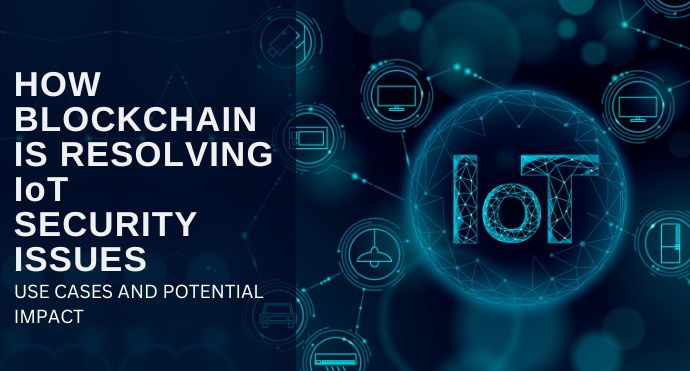Blockchain is revolutionizing the way the Internet of Things (IoT) devices operate and share data. As IoT devices proliferate, greater security is needed to protect these machines from malicious actors. It provides a secure way to exchange data, maintain records and create trust among connected devices. With its decentralized consensus mechanism and cryptography, Blockchain can help solve major security issues faced by IoT devices. It can be used for data authentication, data provenance tracking, identity and access management, and secure communication between devices.
In this blog, we will discuss how Blockchain is being used to resolve IoT security issues and look at a few use cases to illustrate the potential impact.
Here are some use cases and potential impacts of Blockchain in resolving IoT security issues.
IoT Supply Chain
One of the most significant areas where Blockchain is being used to address IoT security issues is in the IoT supply chain. By leveraging Blockchain Technology, businesses can track products throughout their entire lifecycle, all the way from raw materials to the end user. This level of transparency helps to ensure the authenticity of products, protect against counterfeiting, and improve overall safety.
Authentication Process
Another use case for Blockchain in IoT security is in the authentication process. By using Blockchain-based authentication protocols, devices can securely communicate with each other, reducing the risk of data interception and unauthorized access. Furthermore, these protocols also make it easier to track devices, allowing organizations to monitor their use and detect any suspicious activity.
Secure Identity and Access Management: The decentralized nature of Blockchain makes it possible to store and manage user identities and access control in a secure and immutable ledger. This will ensure that only authorized users have access to the system or any device connected to it.
Secure Data Streams
In terms of use cases, Blockchain can be used to secure data streams, such as those produced by medical devices and smart meters. By implementing Blockchain-based protocols, critical data can be securely transmitted to the cloud or other locations. In addition, Blockchain can be used to provide secure communication between connected devices and ensure that the messages are unaltered and untampered with.
Secure Communication: With Blockchain, communication between devices can be securely stored and encrypted, so it remains private and secure. This makes it possible to securely exchange data between devices without having to worry about it falling into the wrong hands.
Data Provenance Tracking: With Blockchain, it is possible to track the origin of data and ensure it is coming from a trusted source. This ensures that data is not tampered with and that it is always valid and up-to-date.
Store and Share data Across the IoT Ecosystem
Blockchain can be used to securely store and share data across the IoT ecosystem. This could include sensitive information such as medical records or financial data. By using a Blockchain-based system, data can be securely stored and accessed using unique keys that can be distributed across the network. This ensures that only authorized users are able to access the data.
Blockchain has the potential to revolutionize the way IoT devices operate. It can provide a secure platform for storing and exchanging data and ensuring only authorized users have access to the system. This can help to reduce instances of data breaches and malicious attacks while keeping users’ data protected and secure.




Thank you for sharing useful information.